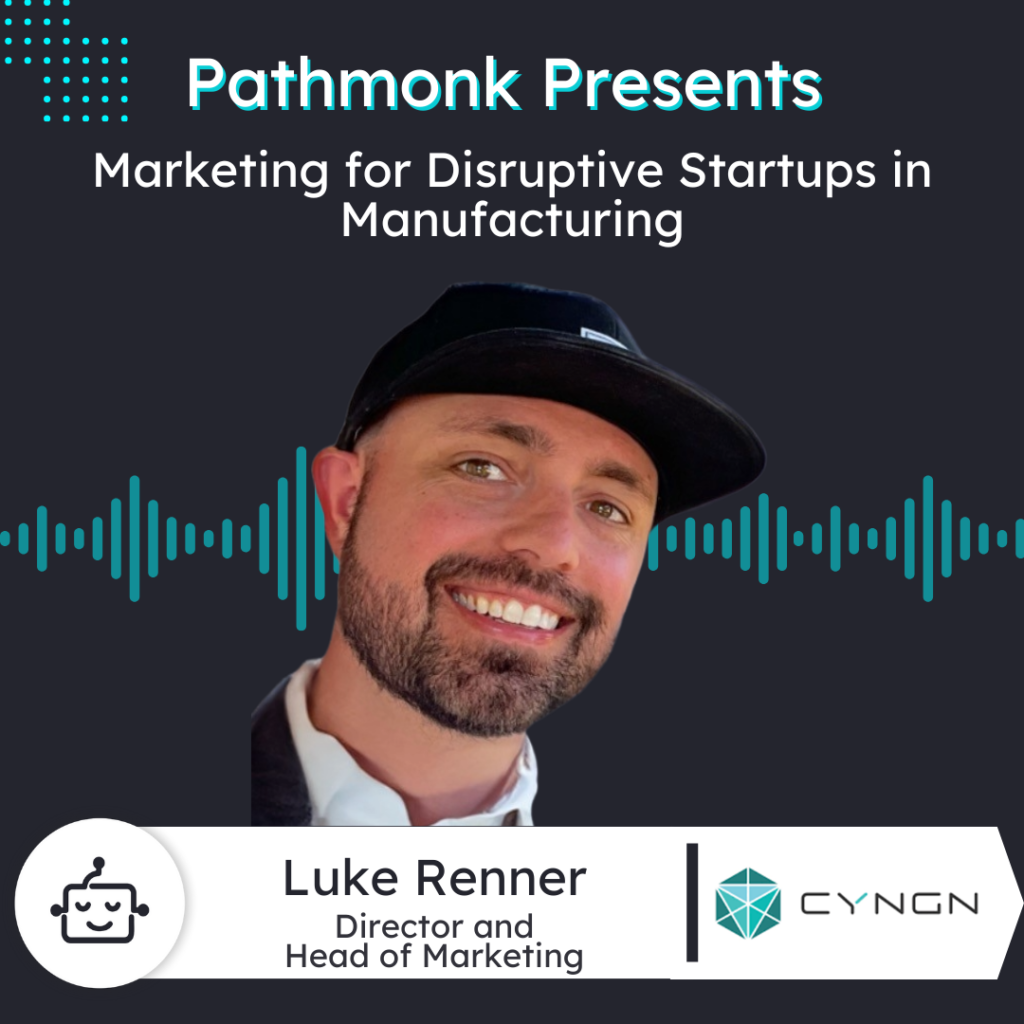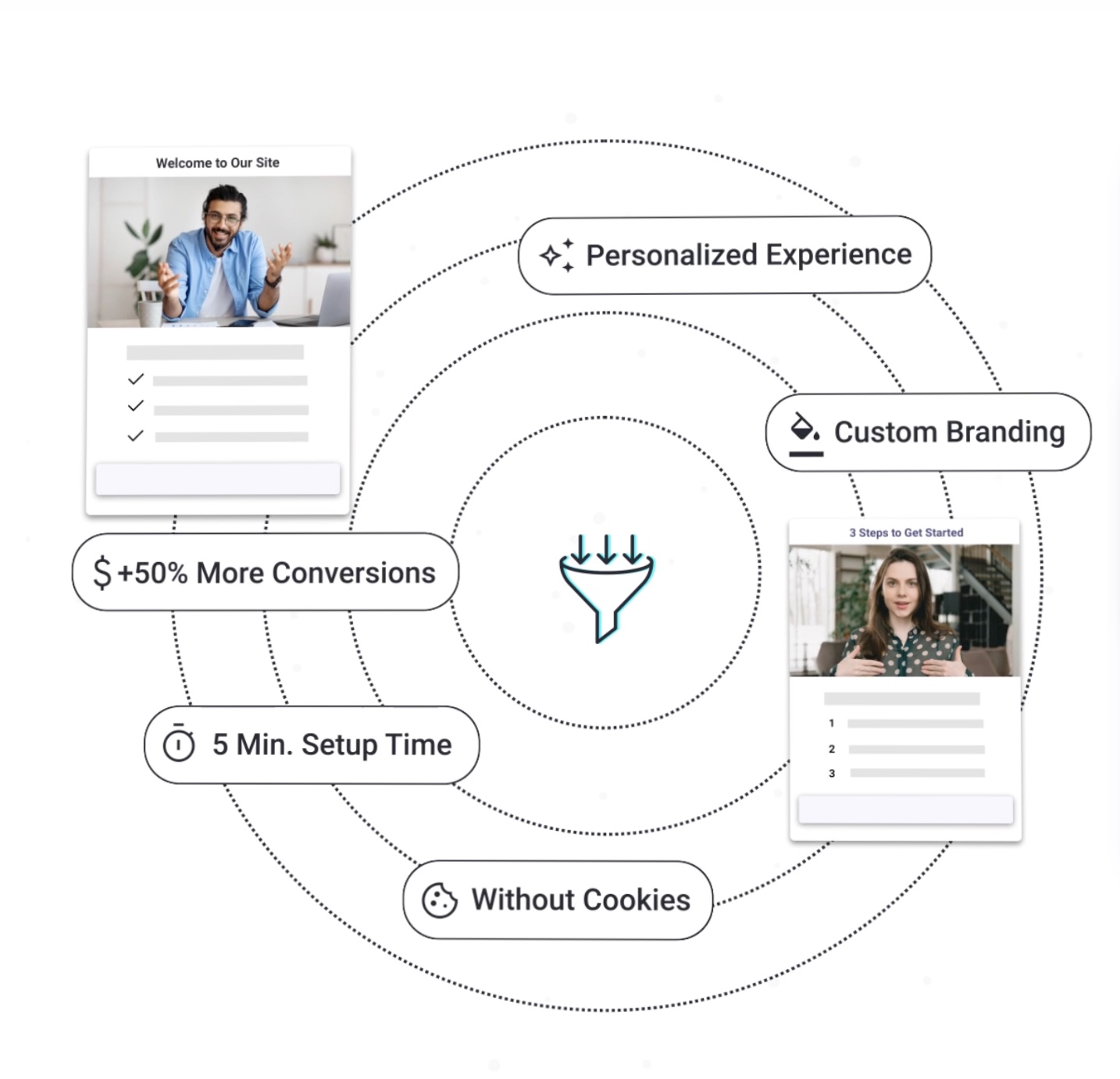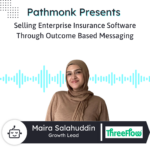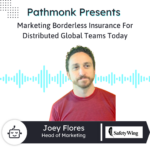
Introduction
Luke Renner, Head of Marketing at Cyngn, discusses the company’s innovative autonomous vehicle solutions for industrial applications.
Luke shares insights on effective marketing strategies, emphasizing the importance of visual storytelling, customer-focused messaging, and rapid experimentation. He also provides valuable advice for marketers in startups, highlighting the need for prioritization and adaptability in a fast-paced environment.
This episode is for marketers working in highly specialized industries that wish to keep a fresh and innovative approach to their marketing strategies. Take a look!
More Sales From Your Website With AI
Personalized interactions based on your users' behaviour to get +50% more conversions.

Ernesto Quezada: Pathmonk is the intelligent tool for website lead generation. With increasing online competition, over 98% of website visitors don’t convert. The ability to successfully show your value proposition and support visitors in their buying journey separates you from the competition online. Pathmonk qualifies and converts leads on your website by figuring out where they are in the buying journey and influencing them in key decision moments. With relevant micro experiences like case studies, intro videos, and much more, stay relevant to your visitors and increase conversions by 50%. Add Pathmonk to your website in seconds. Let the AI do all the work and get access to 50% more qualified leads while you keep doing marketing and sales as usual. Check us on pathmonk.com. Welcome to today’s episode. Let’s talk about today’s guest. We have Luke from Cyngn, head of marketing. How are you doing today, Luke?
Luke Renner: Doing great. Thanks for having me.
Ernesto: It’s great to have you on and, well, I’m sure our listeners are tuning in, wondering what Cyngn is all about. So, let’s kick it off with that. Luke, in your own words, can you tell us a little bit more?
Luke: Yeah, absolutely. So Cyngn develops and deploys autonomous vehicles for industrial use cases like warehouses, factories, and other facilities. We have two main vehicle types that are currently available. The first is our Drive Bot Tucker. It’s an autonomous hauler, and it can tow up to about 12,000 pounds. And then the second is our Drive Bot forklift. That’s going to be available next year. We’re starting to take preorders and show it off. We’re really excited about that one. Cyngn is located in Menlo Park, California, and we do all of the development of our autonomous vehicle software there. That really is the brain of our autonomous vehicle offering. We bundle that brain with off-the-shelf hardware like 3D LiDARs and other sensors to package the whole thing for end users.
Ernesto: Just thinking off the top of my head here, when I first started hearing about this, the only thing I know about is kind of like when Amazon started doing all that throughout their warehouses, getting everything picked up and moved, which is really nice to map everything out. So, great to hear you guys at Cyngn are doing something like that. So that our listeners can get a good understanding of your company, Luke, what are some key problems that you guys like to solve for clients?
Luke: Yeah, absolutely. I mean, you already mentioned one, which is Amazon. Amazon is this huge behemoth in the industries that we’re serving, and a lot of companies are really scrambling to scale up their operations and bring greater automation to their operations to compete with companies like Amazon. More broadly, there really are two main problems that we solve, and these problems are ones that the entire industry is facing, particularly in this post-COVID moment where everyone started doing a lot more e-commerce and buying a lot more goods online. The first problem is really a labor shortage. In 2022, the average turnover rate at a manufacturing facility was around 49%. At Amazon, it’s closer to 300%, which means they need to completely replace their entire warehouse workforce three times a year. This labor shortage problem is pervasive. Seventy-seven percent of manufacturers predict they’ll have trouble attracting and retaining workers in the long run. Autonomous vehicles are a nice contrast to that—they never quit, they never take a vacation, and ours can run for two or more shifts per day.
The second major challenge these companies face is safety. According to OSHA, there are about 50,000 forklift-related injuries each year, and in warehousing, we see about five safety incidents for every 100 employees. Safety is a huge concern and a challenge. Our system has been designed from the ground up with safety in mind. We use multiple sensors, multiple systems, and a ton of redundancy to stop safety risks and incidents in their tracks. Those are the macro challenges. Tactically, our vehicles are best for redundant, repetitive workflows. We come into your facility and switch a task that’s been done by a human over and over again to a vehicle that can do it all by itself. People think that once a human is replaced, they lose their job, but what we’re seeing is that humans are shifted over to do more mission-driven work that requires critical thinking and delivers more value to the company, enabling them to get more done with their existing workforce.
Ernesto: Definitely important. I love hearing that. Increasing workplace efficiency and reducing labor costs are crucial for companies to stay up to date with big companies. So, awesome to hear that.
Luke: Yeah, absolutely. We’re in conversations with customers who are like, we would hire 50 more people today if we could, but there’s just that gap in the availability of workers.
Ernesto: Is there a certain vertical segment or ideal ICP that you guys like to go for?
Luke: Well, because our vehicles can tow so much, we tend to locate our deployments in manufacturing facilities. These companies have big vehicles or big objects they’re building. When you can automate 12,000 pounds of hauling, it makes it really easy to move what they’re building from station to station or do a supply run with thousands of pounds. We’re really excited to announce that Deere is one of our customers. They’re an OEM and a vehicle manufacturer, and this is a great use case for us because their products are so heavy, and our vehicles can really bring that hauling force to their operation.
Ernesto: Nice. Hopefully in the future, I’ll get to see something like a lawnmower that can automatically map out and mow my lawn for me.
Luke: Totally. Everyone thought autonomy would begin on public roads and then filter out to other spaces, but public roads are the most complex use case. By locating autonomy in controlled places like manufacturing facilities or someone’s backyard, we can serve those workflows and do those jobs with much less chaos.
Ernesto: Absolutely. So, how would someone usually find out about Cyngn? Is there a top client acquisition channel for you?
Luke: For us, the website is a huge part of our acquisition. Everything on the digital side flows through our website. We prefer it this way so that we retain control of the leads we’re generating and the audience we’re building. We don’t want to do on-site campaigns on LinkedIn, for example. We encourage people to come to our website and fill out our forms so we retain control of the audience we’re building.
Ernesto: What role does the website play in client acquisition?
Luke: The website is crucial. It’s where all our digital efforts flow through. We prefer to keep control of our leads and audience by having them come to our site, fill out forms, and engage with our content directly.
Ernesto: Is there any tool, tip, or method you would recommend for website lead generation?
Luke: One of our major strengths is our video content. With my film school background, I shoot and edit all our videos myself. Good visual storytelling is crucial. It helps potential customers quickly understand the value of our product. Another important strategy is to focus on how our products can help the customer, rather than getting too technical about how they work. Additionally, we use the five-second rule: if you can’t convey the value of your product in five seconds, you need to simplify your message.
Ernesto: Great tips, thank you for sharing. Let’s switch gears and talk about your role. As the head of marketing, what are some key tasks you focus on in your day-to-day work?
Luke: My primary responsibilities involve coordinating with other departments and leadership to ensure the marketing team is focused on the most important tasks at any given time. Startups are fast-paced with fewer resources, so prioritization is crucial. I also spend a lot of time working with my team, some of whom are very experienced and some more junior. I see it as my role to empower them, share my experience, and help them succeed.
Ernesto: Great to hear. Now let’s move to our rapid-fire question round. Are you ready?
Luke: Sure.
Ernesto: What is the last book you read?
Luke: The last book I read was “The Sympathizer” by Viet Thanh Nguyen. It’s a Pulitzer Prize-winning novel about a Vietnamese spy who comes to America right at the fall of Saigon. Great book, highly recommend it.
Ernesto: What is one thing your company is focused on the most at the moment?
Luke: We are focused on the full commercialization of our vehicles. We’ve moved from an R&D phase to generating new leads, new customers, and new revenue.
Ernesto: If there were no boundaries in technology, what would you want to have fixed for your role as a marketer?
Luke: I recently read “Growth Levers” by Matt Lerner, and one point he makes is that marketing can be more challenging than being a software engineer because of the uncertainty and the need for experimentation. I would love a technology that could run marketing experiments with much less need for hands-on attention. AI could synthesize lessons from many companies and create repeatable systems even for those with zero marketing experience.
Ernesto: If there’s one repetitive task you could automate, what would it be?
Luke: Writing press releases. We are a publicly traded company, so we have to communicate with the market regularly. Press releases are repetitive and rigorous, requiring multiple sign-offs. Automating that process would be great.
Ernesto: Lastly, what is one piece of advice you would give yourself if you were to restart your journey as a marketer today?
Luke: Fail faster. Run more experiments and quickly identify what works and what doesn’t. The sooner you can double down on successful strategies, the better.
Ernesto: Great advice. If someone forgets everything about the interview today, what is the one thing they should remember about Cyngn?
Luke: Our autonomous vehicles can haul 12,000 pounds. On the marketing side, focus on your brand’s visual story. Invest in telling a compelling visual narrative because it sticks in people’s minds and moves your company forward.
Ernesto: Perfect. Thank you for being on with us today, Luke. And to our listeners, thank you for tuning in. We’ll see you on our next episode at Pathmonk Presents. Thanks a lot, Luke.
Luke: Bye.











